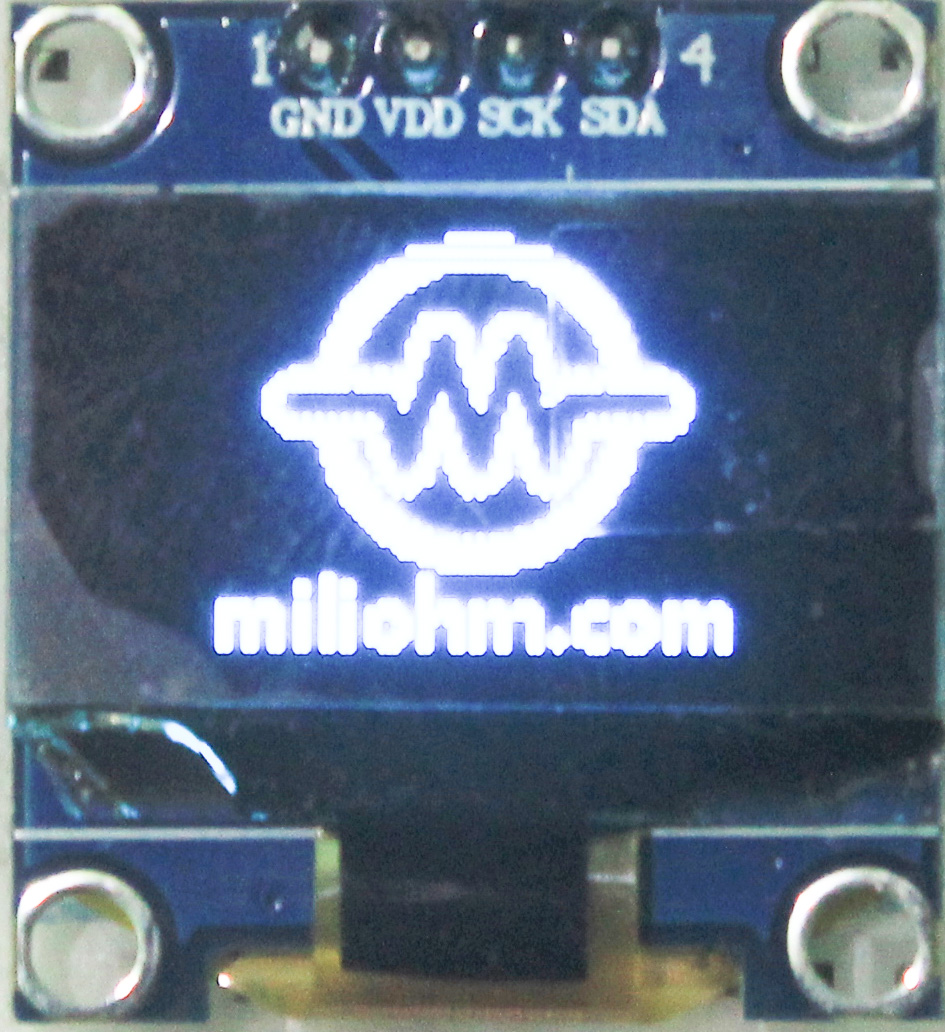

- #OLED ARDUINO I2C EXAMPLE HOW TO#
- #OLED ARDUINO I2C EXAMPLE INSTALL#
- #OLED ARDUINO I2C EXAMPLE FREE#
The schematics for this project is pretty straightforward. These components can be bought from any electronics component store online.

The following components are required to build this project It will require a voltage conversion circuit to be able to measure AC voltages.

It is important to note that this voltmeter can only monitor DC voltages within the range of 0-30v due to the values of the voltage divider used. To make the voltmeter fully functional, we will add a third part, which is an SH1106 controller-based, 1.3″ OLED display, to show the value of the voltage being measured by the voltmeter.
#OLED ARDUINO I2C EXAMPLE FREE#
Feel free to experiment with other resistor values as well. For this tutorial, we will use a combo of a 100k and 10k resistor, with the 10k resistor on the “output side”. This fraction of voltage that goes in is determined by the ratio of the resistors used, as such, there is usually a limit to the maximum voltage that can be applied. To solve this, today’s project uses the principle of voltage divider such that only a fraction of the voltage to be measured is applied to the Arduino. When applied to an analog pin, Arduino will not only give a false reading but it could also damage the board. If you see compilation errors check that you have installed proper library required for OLED Display.Measuring a DC voltage, should probably be as easy as connecting the voltage to be measured to an analog pin on the Arduino, but this becomes complicated when voltages are higher than the Arduino’s operational voltage (5V). Serial.println("Initializing OLED Display") ĭtTextAlignment(TEXT_ALIGN_LEFT) ĭisplay.drawString(0, 10, "Hello world") ĭisplay.drawString(0, 26, "Hello world") Īfter uploading display will show Hello World and some square and circles. SSD1306Wire display(0x3c, 18, 19) //18=SDK 19=SCK As per labeling on ESP32 DevKit Initialize the OLED display using Wire library

#include // Only needed for Arduino 1.6.5 and earlier Note that it uses same labeling of IO pins used on ESP32.
#OLED ARDUINO I2C EXAMPLE INSTALL#
Click on install as shown below.ĮSP32 DevKit OLED Display Code Arduino IDE To install OLED display Library for ESP8266 goto Sketch>Include Library>Manage Libraries and search for SD1306 that’s the display. Installing Required Libraries for OLED Display
#OLED ARDUINO I2C EXAMPLE HOW TO#
This is shown in this post How to Interface 16×2 LCD with NodeMCU ESP8266 with only three wires? Components Required Interfacing of large 16×2 LCD is difficult with ESP32, as it requires 6 IO Lines. This tutorial demonstrate how to use 0.96″ small I2C based Display with ESP32 DevKit using only two IO lines.


 0 kommentar(er)
0 kommentar(er)
